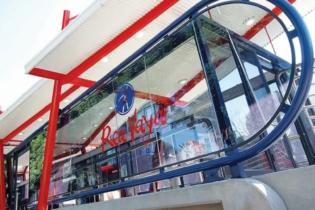Subbed: Danielle
IATA Q2 traffic monitor Air travel improved across all seat classes during July. Passengers travelling on premium (business and first class) seats in international markets rose to a total of 7.5% higher than a year earlier, following a 6.4% rise in June. The numbers of those travelling on economy seats were 5.5% higher, compared with 4.8% in June.Compared to the end of last year there has been a 5% expansion in the premium travel market and a nearly 7% expansion in the economy market. After a period of weakness at the end of the first quarter and the start of the second, both markets have rebounded to regain the trend lines evident in the second half of last year. These trends are close to the average of the past 20 years. Premium travel is still 6% below its pre-recession peak, but economy travel is 6% above its previous high point. As of July, there was no sign yet of the deepening economic gloom discouraging air travel. The strongest growth in the premium travel segment in July was in the developing economy markets. Market segments within Asia (Far East) and the South American markets were strongest, with solid double figure growth supported by still strong economies. However, markets linked to the troubled European economies, across the Atlantic and within Europe, slowed down – particularly in the business-related premium markets. The exception is the route area between Europe and the Far East that continues to show double figure growth in both seat classes.
However, coincident and forward-looking indicators for business travel are looking gloomy. Premium travel typically grows in line with international trade. The growth rate for travel was distorted in May by last year’s volcanic ash event but the June and July growth rates were not distorted, yet they have diverged very significantly from trade growth, which has stopped increasing. The second divergence is with business confidence, which has been a reasonably good leading indicator for premium travel growth by up to six months. Confidence has now fallen to levels consistent with the expansion in premium travel, stalling during the fourth quarter of this year.
In past years the growth of premium air travel has been closely correlated with the growth of international trade. The divergence in May was expected, since air travel growth rates spiked higher owing to the losses last year following the airspace close in Europe resulting from the volcanic ash cloud. However, the June and July growth rates in premium air travel have remained strong, while international trade growth has slumped to zero. Business confidence in the manufacturing sector has also been a good leading indicator of premium travel growth in the past, often leading changes in growth by up to six months. Confidence peaked earlier this year and has steadily declined to the point where, in the past two months, businesses have been reporting that they expect growth to stop. Again, the strength of premium air travel in the past two months has diverged from business confidence.IATA believes that the most likely explanation is that travel decisions in June and July were taken primarily based on developments in the early part of the year when trade and confidence were still strong. There is, of course, a degree of divergence between the weakness of the developed economies, particularly Europe, and the still strong developing economies. To some extent the trade and confidence measures are heavily weighted towards the developed economies and to some degree these are not showing the drivers of travel growth from the developing markets.
However, IATA believes that a major part of the explanation is the lag in business travel decisions, and that in the fourth quarter we will see a significant slowdown. Table 1: Premium traffic growth (Africa)
Routes Share of total premium: Premium traffic growth
Traffic Revenues Jul 11 vs. Jul 10 YTD 2011 vs. YTD 2010
Africa – Middle East 1.0% 0.7% -0.4% -5.0%
Africa – SW Pacific 0.0% 0.1% -7.3% 4.4%
Africa – Far East 0.2% 0.4% 3.9% 9.6%
Within Africa 1.0% 0.5% 13.5% 7.6%
Note: Africa to Europe is missing. Why?








